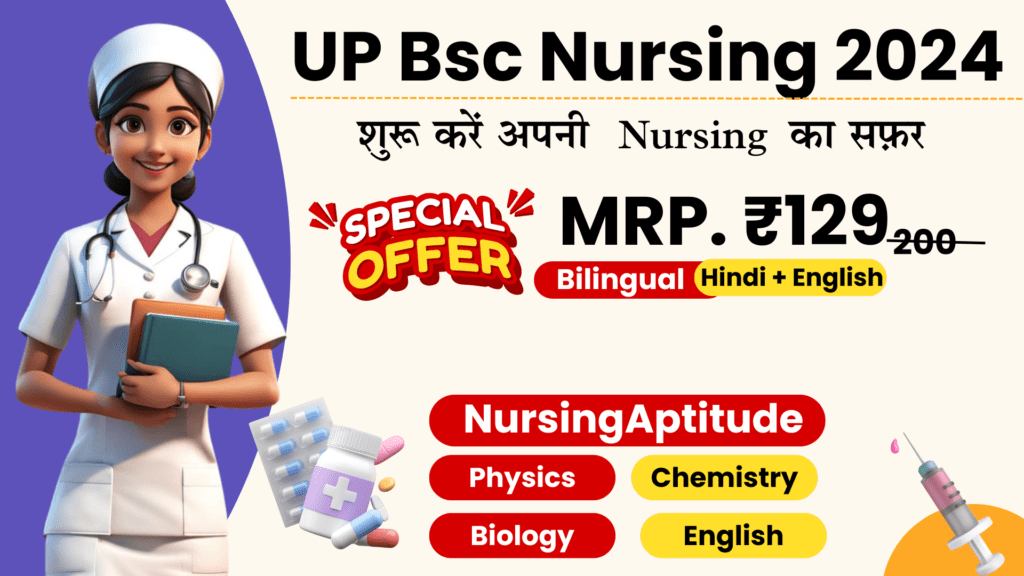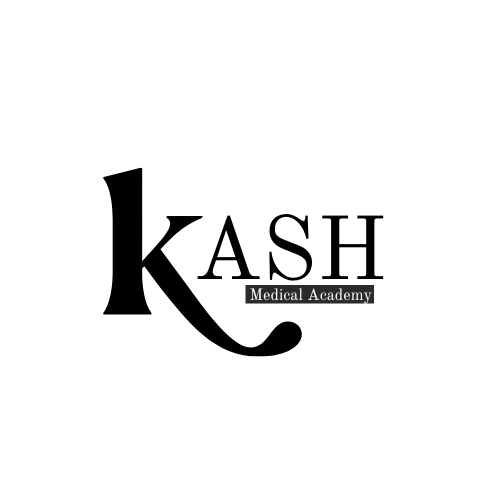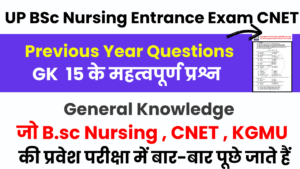
Bsc Nursing MCQs for Biology Chapter 1: Multiple choice questions (MCQs) are a significant part of Bsc Nursing Biology exams and offer a fair chance to students to score well in their 1-mark section. The first 16 questions of section A in the Bsc Nursing Biology 2024 exam will be of 1 mark, out of which 13 could be the MCQs and the rest assertion reason-based questions. Thus, students need to have good subject knowledge to score fully in this section, as there would be no chance of getting marks on writing explanations.
We at Jagran Josh are devoted to preparing students for their exams effectively. Thus, here in this article, we are going to provide the top 15 MCQs that you may see in your final Bsc Nursing . The answers are provided in the answer key. You can download these questions with their answers in the PDF format.
MCQs for Up Bsc Nursing CNET ABVMU Chapter 1: Sexual Reproduction in Flowering Plants
1. What is the male reproductive organ of a flower?
a) Stigma
b) Anther
c) Ovary
d) Style
2. The process of pollen grains transfer from the anther to the stigma of a flower is called:
a) Fertilization
b) Pollination
c) Germination
d) Ovulation
3. Which of the following is not a method of self-pollination in flowers?
a) Cleistogamy
b) Wind pollination
c) Geitonogamy
d) Autogamy
4. In which part of the flower’s pistil does fertilization occur?
a) Ovary
b) Style
c) Stigma
d) Ovule
5. The fusion of male and female gametes during sexual reproduction in flowering plants leads to the formation of:
a) Embryo
b) Zygote
c) Endosperm
d) Seed
6. In angiosperms, meiosis occurs during the formation of:
a) Pollen grains
b) Ovules
c) Endosperm
d) Embryo sac
7. What is the purpose of the pollen tube in plants?
a) To provide support to the pollen grain
b) To protect the pollen grain during transportation
c) To help in fertilization by carrying male gametes to the ovary
d) To store food for the developing embryo
8. The phenomenon where a single pollen grain germinates and produces two male gametes is called:
a) Binary fission
b) Double fertilization
c) Bipolar division
d) Triple fusion
9. Which part of the embryo sac nourishes the developing embryo?
a) Synergids
b) Antipodal cells
c) Egg cell
d) Central cell
10. Which hormone is responsible for the development of fruits from the ovary after fertilization?
a) Auxin
b) Cytokinin
c) Gibberellin
d) Ethylene
11. The transfer of pollen grains from the anther to the stigma of the same flower is which type of pollination?
a) Geitonogamy
b) Cross-pollination
c) Cleistogamy
d) Autogamy
12. Which of the following is not a reproductive part of a flower?
a) Sepal
b) Petal
c) Stamen
d) Style
13. In heterogamous flowers, the male and female reproductive organs mature:
a) At the same time
b) On different flowers of the same plant
c) On different plants of the same species
d) In different seasons
14. The edible part of the mango fruit is the:
a) Mesocarp
b) Epicarp
c) Endocarp
d) Seed
15. Which of the following is a non-endospermic seed?
a) Corn
b) Pea
c) Coconut
d) Sunflower
Answer Key:
1. b) Anther
2. b) Pollination
3. b) Wind pollination
4. a) Ovary
5. b) Zygote
6. d) Embryo sac
7. c) To help in fertilization by carrying male gametes to the ovary
8. b) Double fertilization
9. d) Central cell
10. d) Ethylene
11. d) Autogamy
12. a) Sepal
13. c) On different plants of the same species
14. a) Mesocarp
15. b) Pea

| Chapter Name | Chapter Link |
|---|---|
| Sexual Reproduction in Flowering Plants | Link |
| Human Reproduction | Link |
| Reproductive Health | Link |
| Principles of Inheritance and Variation | Link |
| Molecular Basis Of Inheritance | Link |
| Evolution | Link |
| Human Health and Disease | Link |
| Microbes in Human Welfare | Link |
| Biotechnology : Principles and Process | Link |
| Biotechnology and its Applications | Link |
| Organism And Population | Link |
| Ecosystem | Link |
| Biodiversity and Conservation | Link |





[…] B.Sc. Nursing Entrance Exam: Most Important MCQs on Sexual Reproduction in Flowering Plants (Free Do… […]
[…] Link […]
[…] Link […]
[…] Link […]
[…] Link […]